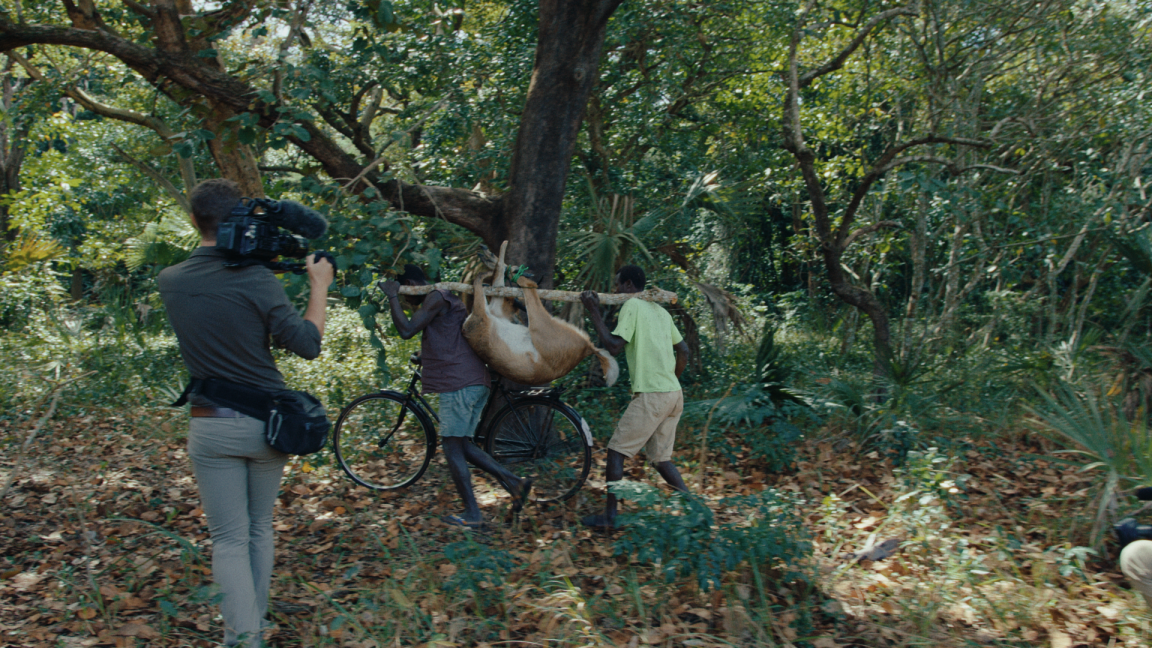2024.11.29
1. Please introduce yourself as a DP.
My name is Sean Viljoen.I am a Director and DP based in Cape Town, South Africa. I am passionate about wild places and conservation, focusing my time on telling stories about the human impact on our planet’s biodiversity. Recently, I produced and directed the Guardians docuseries on EarthxTV and worked as a DP on two episodes of Apple TV’s new Born to Be Wild series.


2. In what situations or conditions did you get the chance to use our Pictor Zoom lenses?
I purchased a set of DZOFILM Pictor Zoom lenses in 2022, which were the first set of cine zooms I used with the Blackmagic Design 6K Pro. These lenses opened my mind to the possibilities of cine zooms, particularly their parfocal ability and long focus throw. The first time I used them was during a two-camera shoot in Costa Rica, where we put the lenses to the test in the challenging jungle environment!

3. In what scenarios (type of film/scene) would you prefer to use zoom lenses for shooting?
Most of our work involves following characters in an observational documentary style during hands-on conservation activities. This often embeds us with teams of conservationists who are relocating animals or capturing wildlife for research purposes. In such scenarios, we prioritize the safety of both people and animals, which means we don’t have the luxury of stopping contributors or asking them to repeat an action or line of dialogue. Zoom lenses are crucial in these situations, as they eliminate the need to change lenses mid-action, allowing us to capture all the necessary coverage quickly and efficiently without interrupting the flow.


4. What are your thoughts on the Pictor Zoom lenses after using them?
I’ve thoroughly enjoyed using the Pictor Zoom lenses, which have become our go-to choice for all productions. They are reliable, well-designed, and produce beautiful, natural images that aren’t overly sharp. With small documentary crews, we often work with just two camera operators or solo operators. When using a two-camera setup, the Pictor Zoom 20-55mm and 50-125mm complement each other perfectly, providing a versatile and effective pairing.


5. Have the Pictor Zoom lenses helped you overcome any challenges in filming? For example?
We frequently work in extreme environments—whether it’s the sand of the Sahara Desert, the rainforests of Costa Rica, or the swamps of Mozambique. In such remote locations, equipment reliability is paramount, and I trust DZOFILM’s exceptional build quality. Additionally, the consistent image quality across the lens set and their precise color matching have been invaluable for our workflow.
6. Which is your favorite focal length in the set? Why?
When filming on S35 cameras with a two-camera setup, the 20-55mm and 50-125mm provide excellent coverage, ensuring the operators capture complementary shots for post-production. Personally, I love the 50-125mm for its aesthetic and versatility. Some of my favorite images on the Ursa Mini Pro 12K OLPF have been captured using this lens.
7. How does it feel using the Pictor Zoom lenses on a Blackmagic Design camera?
I’ve been filming with Blackmagic Design cameras since 2018, and the Pictor Zoom lenses have proven to be a great match. The image quality holds up remarkably well on the Ursa Mini Pro 12K, and both Blackmagic Design cameras and DZOFILM lenses offer incredible value at their price points. When space is limited, we often rely on the BMD Pocket Cinema 6K Pro for its compact and lightweight design. Paired with the two Pictor Zoom lenses, we can achieve a wide focal range while maintaining a lightweight, portable setup.
8. Based on your on-set experience, what innovative features would you like to see in DZOFILM's future products?
I admire the build quality of the Pictor Zoom lenses, which are relatively small and lightweight for their zoom range, features, and image quality.
For documentary projects, I appreciate lenses that allow me to keep one on the camera all day and cover all my needs. While the 20-55mm does this most of the time, a closer minimum focus distance would make it even more versatile.
On the wide end of the 20-55mm, the image can feel slightly soft when the subject is a few meters from the camera (e.g., during a full-body interview shot). Addressing sharpness across the entire focal and zoom range would be ideal, though I understand the technical challenges involved.

9. Do you currently have any ongoing projects? Have you been using other DZOFILM lenses in these productions?
I recently completed a short film called Wa’hash, shot on the DZOFILM Pictor Zooms, which explores the reintroduction of scimitar-horned oryx and addax to their native homeland in Chad, Africa. The film is set for release at the end of 2025.
Additionally, I’m continuing work on the Born to Be Wild series for Apple TV, where I’ve used the Pictor Zooms extensively with the Ursa Mini Pro 12K OLPF. The commissioner’s satisfaction with the image quality is a testament to the lenses’ performance.
Looking ahead, I’m excited to work with DZOFILM’s Arles primes and Gnosis macro lenses, which I’m confident will be as reliable and high-quality as the Pictor Zooms.

